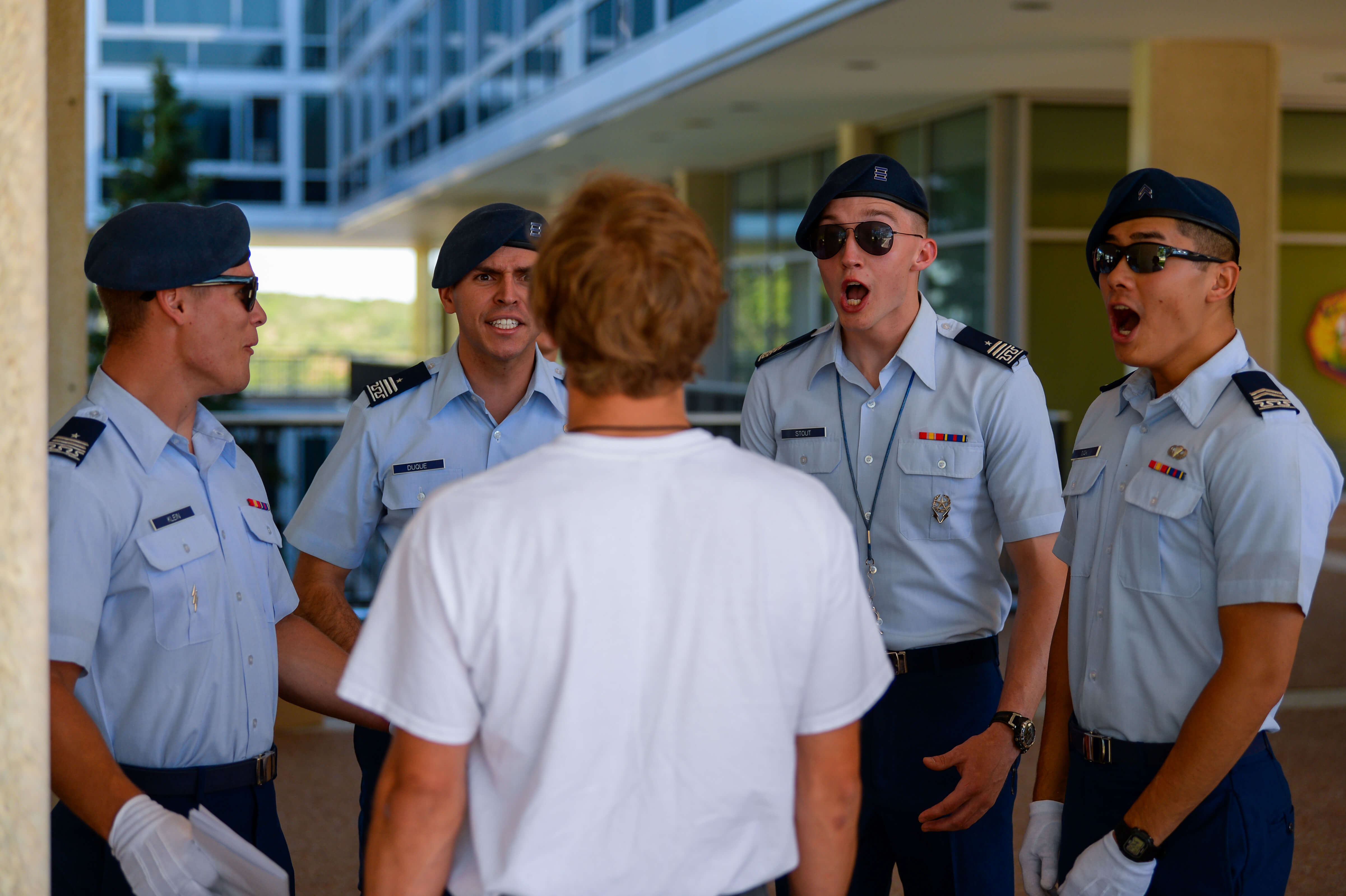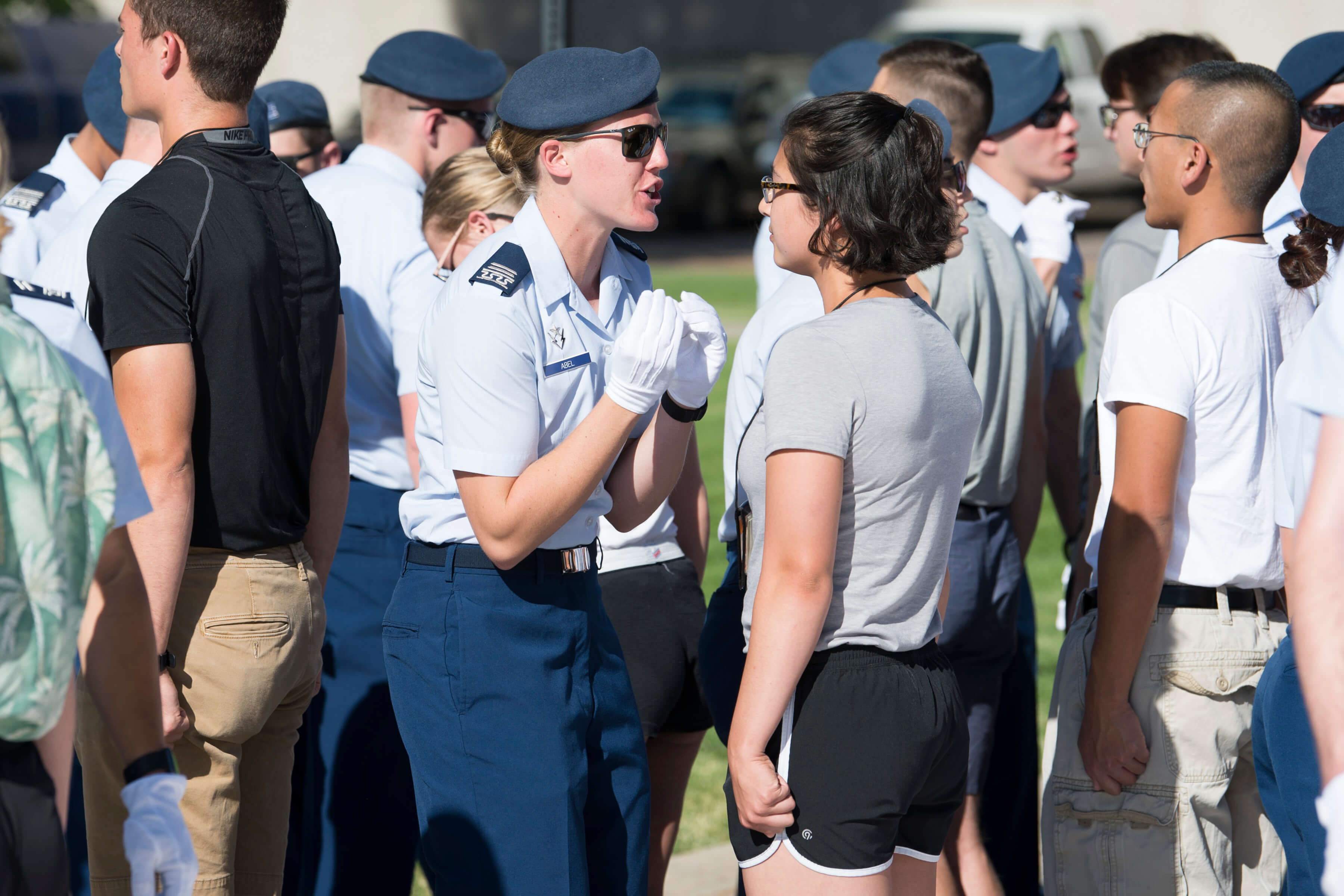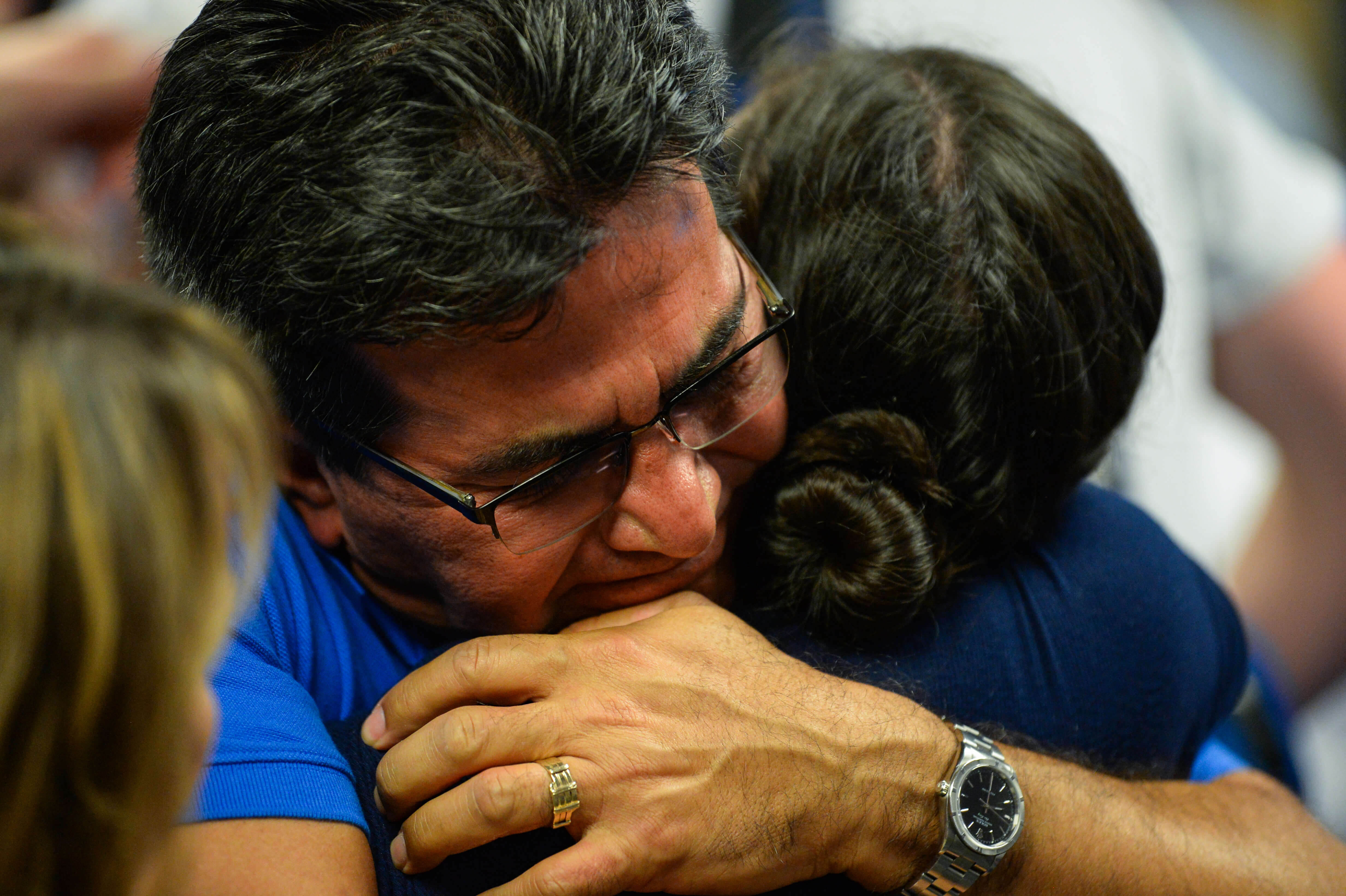‘Let the journey begin’: Most diverse class in Air Force Academy history reports for Basic Cadet Training

A basic cadet gets briefed by members of the cadet cadre during Basic Cadet Training June 28, 2018 at the U.S. Air Force Academy. In all, 1,170 young men and women were scheduled to report to BCT, the most diverse class in Air Force Academy history. (U.S. Air Force photo/Christopher DeWitt)
Story by Ray Bowden, June 26, 2018
U.S. AIR FORCE ACADEMY, Colo. — Droves of young men and women reported to Basic Cadet Training at the Air Force Academy June 28.
The 1,170 basic cadets make up the most diverse class ever admitted to the Academy, with roughly 34 percent self-identifying as a minority.
“All of you have chosen to be part of the Air Force’s academy,” said Academy Superintendent Lt. Gen. Jay Silveria, speaking to groups of parents and basic cadets at the arena. “You are committing to a climate of respect and dignity. Each person brings something to the fight and each person is critically important to mission success.”
The basic cadets arrived between 7 a.m. and noon. Before officially “signing in” for BCT, they waited in a line that snaked around the arena. Most admitted to the Academy were with parents or other family members, including Basic Cadets Eve Schoenrock, Lauren Humpherys and Jordan Stoiber
Eve Schoenrock
Eve Schoenrock of Huntsville, Alabama, was with her parents, Doug and Linda Schoenrock. She’s one of 295 women representing 25.2 percent of the Class of 2022. She said she hopes to pursue a bachelor’s of engineering.
The new basic cadet said the Academy’s rigorous environment motivated her to apply for admittance.
“I liked the determined atmosphere and I also really wanted to serve my country,” she said.
Although nervous about the challenges Eve will face, Linda said she’s confident in her daughter’s ability to excel.
“We support her 100 percent,” Linda said.
Doug said Eve’s hard work and academic and athletic excellence got her to the Academy.
“I can’t think of a better place for her,” he said. “This is a good thing. It gives me hope for the future and our country. It takes a special person to step outside of the norm and make this type of commitment.”

A basic cadet at the U.S. Air Force Academy gets her marching orders from a member of cadet cadre, June 28, 2018. Select upperclassmen-and-women at the Academy lead basic cadets through the six-week program which focuses on military, physical and weapons training. (U.S. Air Force photo/Bill Evans)
Lauren Humpherys
Lauren Humpherys of La Quinta, California was also her parents Becky and Scott Humpherys.
“I’m here to prepare myself for a career in cyber security,” she said. “I feel ‘what better way to do that than in the Air Force?’ It will be challenging, but it will make me into the best person I can be and maximize my potential.”
Becky said she was “almost hyperventilating” about what lay in store for her daughter but said she’s confident Lauren is “finally in her element.”
“She’s worked really hard for this,” Becky said.
Lauren’s acceptance to the Academy is the result of a family effort, Scott said.
“It’s the culmination of 18 years of hard work, and work from her and her mom, and the entire family,” he said.
Several of the family’s relatives served in the U.S. military, Becky said.
“[Lauren is] going to carry the torch and chart new territory,” she said.

A father hugs his daughter June 28, 2018 before she reports to Basic Cadet Training at the U.S. Air Force Academy. (U.S. Air Force photo/Christopher DeWitt)
Jordan Stoiber
Jordan Stoiber of Phoenix, Arizona, was with his parents Joy and Greg. He hopes to become a pilot like his grandfather, an Air Force veteran.
“I’ve wanted to be in the Air Force since I was little,” Jordan said. “I’m a little nervous but my parents got me ready with guidance and lots of discipline.”
Joy, a former Army reservist, and Greg said they support their son’s Air Force dreams.
“I’m really excited for him to get to go do his thing. Emotionally, it will be tough here in a little bit,” Greg said, referring to his eventually having to leave Jordan to the care of the Academy’s military trainers.
Silveria continued to speak to hundreds of basic cadets and their parents throughout the morning.
“Four years from now, these young men and women will become officers in the world’s greatest air force and be critical to core U.S. Air Force mission. Let the journey begin.”
This Year’s Stats
Most diverse class in Air Force Academy history reports for Basic Cadet Training.
(Editor’s note: These statistics are current as of June 26 and subject to change)
- 1,170 men and women were accepted into the Academy
- 295 are women representing 25.2 percent of the Class of 2022
- 875 are men representing 74.8 percent of the class
- 119 self-identify as Hispanic and represent 10.2 percent of the class
- 1,051 self-identify as not being Hispanic and represent 89.8 percent of the class
- 397 self-identify as a minority and represent 33.9 percent of the class
- 133 self-identify as African-American and represent 11.4 percent of the class
- 15 self-identify as Native American and represent 1.3 percent of the class
- 111 self-identify as Asian and represent 9.5 percent of the class
- 19 self-identify as Pacific Islander and represent 1.6 percent of the class
- 58 declined to respond and represent 5 percent of the class
- 520, or 44.4 percent, are medically qualified to potentially become pilots
- 136, or 11.6 percent, are medically qualified to become navigators
- 513, or 43.9 percent, are medically qualified to receive a commission other than pilot or navigator
- The commissioning status of 1, or 0.1 percent of the class, had not been determined as of June 26
- 296, or 25.3 percent, are recruited athletes
- 170, or 14.5 percent, are first-generation college attendants
- 138, or 11.8 percent, are children in single-parent families
- 59, or 5 percent, are prior service members
- 114, or 9.7 percent, are children of service academy graduates
- 79, or 6.7 percent, are children of Air Force Academy graduates
- 15 are children of West Point graduates
- 16 are children of Naval Academy graduates
- 4 are children of U.S. Coast Guard Academy graduates